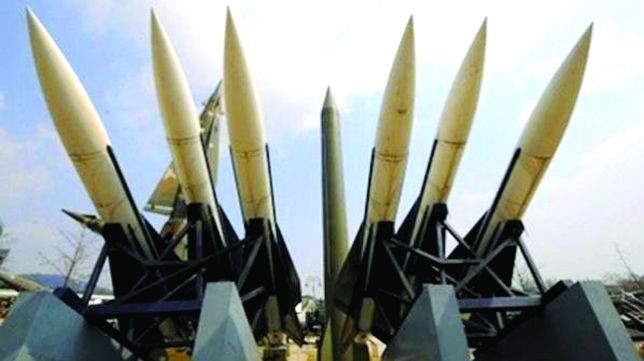A Defense Weapon that creates Offence?
June 1, 2017 | Expert Insights

Pyongyang, North Korea has conducted several nuclear and missile tests, including launches from submarines. When the THAAD (Terminal High Altitude Area Defense) was deployed in the southeastern region, in Seongju in attempts to counter potential threats from North Korea, South Korea was treated with consequence by China who poured the frustration onto the diplomatic and economic realms, by impeding tourists and making sanctions. The relations between the two nations, China and South Korea were at one point ‘severely strained’.
Background
A Milestone for Defense
The US launched a mock ICBM (intercontinental ballistic missile) over the Pacific Ocean which was destroyed by an interceptor from Vandenberg Air force Base in California. The Missile Defense Agency confirms that the success of the exercise is an achievement for defense purposes and also in acting as a “deterrent” against various threats. United States officials assert that the missile system is still far from being developed to its full capacity. The Pentagon, the United States Department of Defense mentioned that the long-stand test of the inceptor system was not particularly designed to intercept threats from North Korea, but from any region, including Iran.
Analysis
Is it timing?
The test came two days after North Korea fired a missile which landed in Japan’s exclusive economic zone, around 300 kilometers from the coast of Japan. There is an obvious demonstration of military capabilities in the region, backed by big powers like the United States and China. South Korea and North Korea continue to fuel hostility with China’s sanctions on South Korea and Japan’s warning against North Korea. The region’s dynamics changes with the US responding through military developments like the THAAD (Terminal High Altitude Area Defense), especially for countries like China who seek to maintain influence.
Can Weapons fend off Insecurity?
Assessment
As the testing of intercontinental missiles and nuclear warheads carry forth in a region that affects many countries, experts believe that the testing of three different missiles in three weeks by North Korea is conducted with reason. Kim Jon-un of North Korea has amped up the military arsenal in the region, to which a counter-reaction is at most, expected from any rival or opponent. The THAAD was developed in this light, with an agenda to counter an attack; the missile is therefore a ‘defensive’ weapon system. The US however, uses advance ‘radar technology’ to track missiles and this may aid more to the advantage of the Country and therefore is opposed by China. In a situation where many players are contenders, there is an absolute “power play” in determining who can control the stability of the region. China claims that the new technology developed by the US threatens its safety while Japan strongly supports it in retaliation to North Korea’s erratic firing of missiles.
Insecurity in the region is encouraging a stock piling and development of more weapons which will only allow for more insecurity to prevail. If the dynamics continue, with no party willing to forfeit, then a new ‘cold war’ will emerge in the region. This would pose a huge danger to the world as the actors are no longer playing with conventional weapons system.








Comments